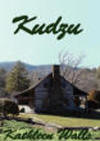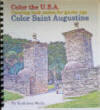An Extraterrestrial Heritage Area in Georgia
Story and photos by Tom Straka

Newsweek magazine recently
published an
article
with a catchy title: “The Weirdest, Most Extraterrestrial Spots
You Can Visit, Here on Earth,” promising “some of Earth’s most
bizarrely surreal natural wonders.” There were eleven
locations, ranging from a national forest park in China with
bizarre rock formations, a desert in Canada’s Yukon, Easter
Island, the world’s largest salt flat in Bolivia, the Skeleton
Coast of Namibia, to Glowworm Caves in New Zealand. One
location caught my eye, as it is only a few hours away. The
Arabia Mountain Natural Area, just east of Atlanta, was
described as “as close to the experience of walking on the
moon’s surface as we have on Earth.” As you begin the hike up
Arabia Mountain, shown in the lead photograph, you are on solid
rock, and the scant forest soon gives way to the “lunar
surface.” You’ll be on a monadnock.
There are three primary
monadnocks in the Atlanta area: the Arabia Mountain, Panola
Mountain, and Stone Mountain. A monadnock is an isolated, rocky
mountain. All three can be hiked and all crest with a top that
provides an unobstructed view of the surrounding landscape.
Arabia Mountain is the one that has the lunar appearance.
Arabia Mountain is the lesser known of the Atlanta
monadnocks, equating to fewer commercial attractions (no
skyride like Stone Mountain), but with the least crowded
conditions of the three monadnocks.
So, what is a monadnock?
Monadnocks result from erosion. They are composed of rock
which is very resistant to erosion, and develop as remnants, as
less resistant material erodes around, becoming an isolated
hill of bedrock. In the case of Arabia Mountain, it is granite
and migmatite that resist erosion better than the surrounding
rock, resulting in a bare and exposed rock face. Devil’s Tower
in Wyoming is one of the best known monadnocks in the United
States.
Arabia Mountain was quarried for its Lithonia granite,
called
Tidal Grey, as a building material. It has a distinctive
swirl pattern and is prized for its high structural density. It
has been used across the country, including buildings at the
West Point and Annapolis military academies, federal buildings
in Washington, D.C., the Brooklyn Bridge, and state capitols.
The Davidson family had a massive granite
quarry operation in the area, which included Arabia
Mountain. At one time, the
Davidson Quarry was the largest granite quarry in the
world. In the early 1970s the quarry closed when the land was
donated to become a protected landscape. There is still
evidence there on what the quarry industry looked like,
including the ruins of quarry buildings and even metal spikes
used to split the granite still embedded in the rock.
Arabia Mountain is part of the
Arabia Mountain National Heritage Area, a patchwork of
preserved forest, which includes Panola Mountain. It is not
just about the rocks, but a seeming barren landscape that
includes wetlands, forests, streams, and lakes. The
ecology is part of the attraction, rare, native plant
species, such as red diamorpha in the winter and yellow daisies
in the fall. Seasonal change makes the rock appear to be in
constant metamorphosis.
Access is via hiking trails and multiple-use bike paths,
with trails open from dawn to dusk. There are even guided
tours. Free parking is provided at the nature center and at the
base of Arabia Mountain. The preserve
brochure is available online. The heritage area is designed
for hiking; all the attractions are linked by a well-developed
33 mile trail system, which includes arched granite bridges, a
wooden boardwalk, and rock outcroppings throughout.
Up to the Top
The hike to the top can start from several parking
areas, including one right at the base of Arabia Mountain that
is just over a half mile to the top. Almost from the very start
the trail is on solid rock gaining elevation with each step.
Unless you look back, it is soon pure rock all the way up.
Notice in the lead photograph there is a cairn marking the path
to the top. Actually, if you look closely, there is another one
in the distance. The are nearly two dozen of them leading to
the top, widely spaced, but clearly visible from
cairn-to-cairn. You’d think they would not be necessary, as
“up” is very easy to figure out. On the middle of the mountain
up becomes quite challenging in terms of finding the best path
on an irregular mound-shaped surface. Without the cairns,
people would be all over the slope, instead of trampling just a
single path.

It is difficult to
see in this photograph, but there are three cairns
in view, so the path is always also in view.
As you quickly exit the forest on the hiking path, the
trail moves abruptly up. The gain in elevation is only 172 feet
and that does not seem great, until you try to walk it. Sixteen
stories is another way to see it (or feel it). It is definitely
easier going down than going up. There are so many small and
unusual things on the mountain surface as you ascend, you’ll
take natural breaks to study small rock features or the
surprising number of plants that can survive on pure rock.

The trail first
begins the trek up and 172 feet of elevation can look a
little daunting if it is pure rock.
The quarries on the heritage area are in multiple
places. They are not well marked Heritage Area maps, but that
is not necessary. Visitors will likely bump into some
opportunities to visit a quarry by chance by just hiking a bit.
On the trail to the mountain top there is a quarry very close
to the beginning. It is interesting to how the big blocks of
stone were chiseled out of the mountain and just how big they
were. Scheduled tours of the mountain quarry ruins are
available.
 Rock Quarry on the
side of mountain trail. In places there are still
spikes embedded in the stone.
Rock Quarry on the
side of mountain trail. In places there are still
spikes embedded in the stone.
One of the most interesting features of the mountain is
the pooled water and the dynamic ecosystem which develops in a
place you just don’t expect plants. Lichen growth and rock
erosion produce solution pits and vernal (or ephemeral) pools.
Solution pools are small impressions on the rock face filled
with soil. When these occasionally fill with water, a vernal
pool is created.
Vernal pools are part of the mountain ecosystem and produce
dramatic spring displays. Arabia Mountain is best known for the
red budded plants called diamorpha (also called elf orpine).
This trip was in July (dormant season) when the pools were
nearly dry and still there were a few plants, but nothing as
dramatic as the diamorpha which bloom in April. With
reluctance, an image from Wikimedia is included, as the
diamorpha need to be recognized.

A vernal or
ephemeral pool in July. It is hard to believe plants survive
in July on the hot mountain.

A vernal pool in
April, with red diamorpha, one of many plants which survive in the harsh conditions.
(Credit: Thomson200, CC0, via Wikimedia Commons)
Does the top really look extraterrestrial or lunar-like?
I’m not so sure. I recall astronauts leaving footprints on the
lunar surface and no one is leaving footprints on Arabia
Mountain. Even in July there is enough vegetation to give away
you are not on the moon. Even so, while I won’t agree with
extraterrestrial in the Newsweek article, I will agree
with “bizarrely surreal natural wonders.” The view is
wonderous, but I was disappointed in not being able to see the
Atlanta skyline. Perhaps, the vernal pools made up for that.

Typical
mountaintop scene, Georgia countryside in the
distance, bare stone and vernal pools.

Some areas of the
mountaintop are more lunar than others.

Bare mountainside
with cairns in the distance, another lunar-like area.
The Heritage Area has a huge trail system and the
mountain leaves the impression the whole park is rock based.
Not so. It is very easy to get on forested trails. In July my
impression was the difference in temperature between the
mountain and the forest was like someone turned on an air
conditioner in the forest. The mountains stand out, but the
area is mostly forested. There is a nature center where you can
get information and talk to a ranger. It is one of several
parking areas and trailheads. The hike up and back on Arabia
Mountain can take less than an hour, but that would make no
sense. There is too much to see and experience on the hike to
not take your time. There are plenty of trails and natural
attractions to make a day of hiking an excellent option. Arabia
Mountain is very close to Atlanta; big cities have plenty of
hidden attractions if you know where to look.
Author.
Tom Straka is an emeritus professor of forestry at Clemson
University in South Carolina. He has an interest in history,
forestry and natural resources, natural history, and the
American West.































